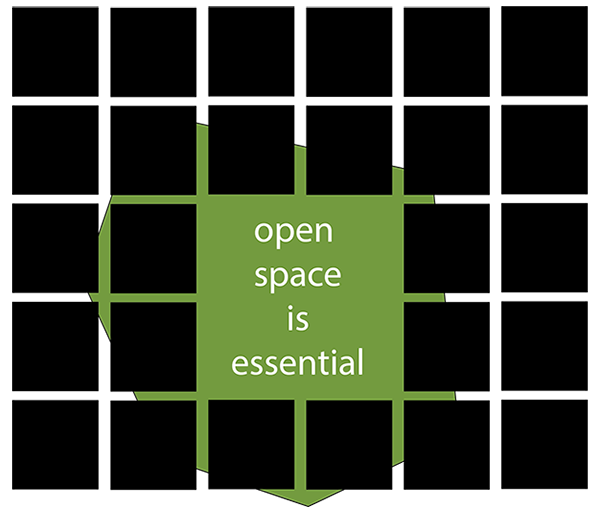Open Space: Essential for liveability

Thousands of new medium to high density apartments are earmarked for Melbourne’s middle suburbs. There’s been a lot of “red tape” cutting and making partnerships with developers, but little emphasis on creating liveable, quality places, and nothing about open space. Lots more open space will be needed, especially of the green type.
Open Space is valuable
Open space is critical for urban living, for our physical and social wellbeing, for recreation and its natural essence. Green space can reduce anxiety, depression, stress, enhance mood, and boost overall mental health. It’s also good for the environment - biodiversity, air quality, climate change, urban cooling, water runoff, flooding and water pollution.
Loss of existing green space
Districts selected are typically low-rise areas, commercial uses surrounded by detached housing. Existing public open space is minimal, but house allotments contain high amounts of private green space. Most of this green space will be lost through development.
Apartment developments provide little new open space
Apartments usually come small balconies but little private open space, though high-rise apartments often have no balconies. In high density urban areas, apartment towers are often based on a 3-storey high podium, which covers the whole site, while open space is left to fill the residual areas around the building perimeters and roof tops.
Requirements for open space in new apartment developments is small, equating to only a fraction of the site area. For example, 250 sq m is required for a development of 100+ apartments, that is 2.5 sq m per apartment, not enough to replace the open space lost.
No loss open space targets
New developments need to replace lost green open space at a minimum of 1 for 1. Additional green space needs to be provided at a rate commensurate with the overall population growth. The City of Melbourne has a target of 22 sq m per person.
Open space within an apartment development is rarely for public use, but gated for residents only. In space deprived areas, large developments may need to provide additional areas within the site to assist in providing necessary public open space for everyone. Every apartment should be within easy walking distance of public open space, not more than 300 metres.
Sustainable communities
To encourage the development of higher density housing, the government has taken a proactive approach. Districts have been designated for development without any direct community involvement, objector rights have been reduced and “red tape” slashed.
For communities to be sustainable, quality housing and infrastructure is essential. However, it should be guided by public involvement that ensures development of places the community wants.
Open space, proximity, quantity and quality are essential to help make places liveable.